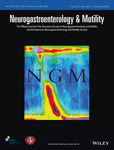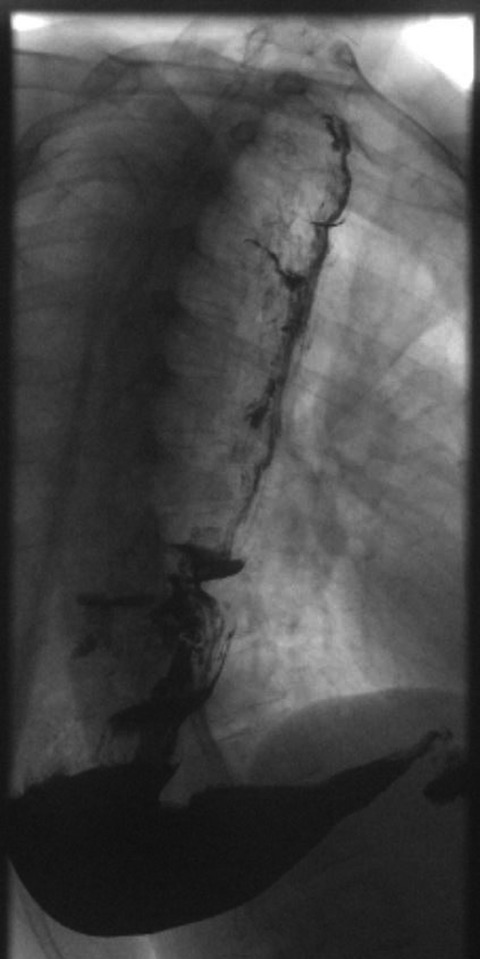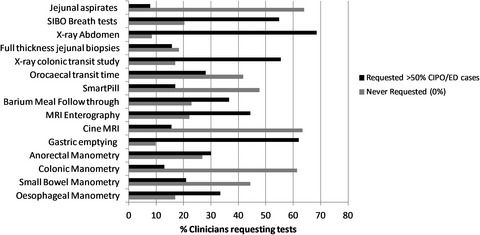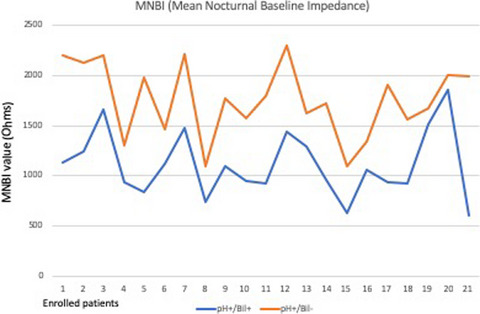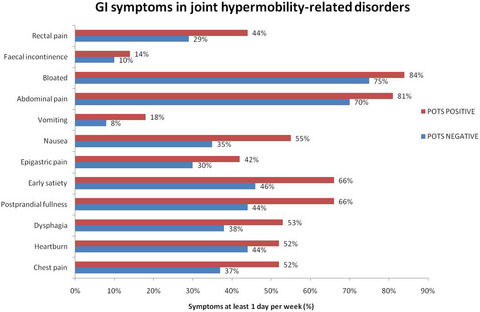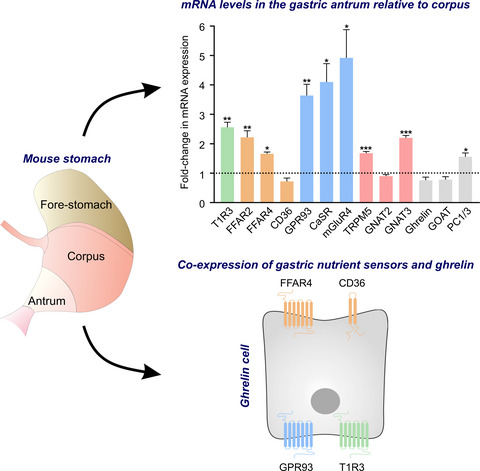Journal list menu
Export Citations
Download PDFs
ISSUE INFORMATION
MINI-REVIEW
Mechanisms and management of gastrointestinal symptoms in postural orthostatic tachycardia syndrome
- First Published: 02 November 2020
REVIEWS
Mucosal pathogenesis in gastro-esophageal reflux disease
- First Published: 28 October 2020
ORIGINAL ARTICLES
Avoidant/restrictive food intake disorder symptoms are frequent in patients presenting for symptoms of gastroparesis
- First Published: 16 July 2020

Avoiding foods or restricting intake can be a normative approach to manage symptoms of gastroparesis/functional dyspepsia. However, a subset of patients may have an underlying feeding/eating disorder, or be at risk for developing one. This study showed clinically significant feeding/eating disorder symptoms, particularly symptoms of avoidant/restrictive food intake disorder (ARFID), were common among outpatients presenting for gastroparesis/dyspepsia. ARFID is a feeding/eating disorder characterized by avoidant/restrictive eating not motivated by body shape/weight concerns that leads to medical and/or psychosocial consequences. Although multiple etiologic pathways are possible and require further research, clinicians may consider assessing for avoidant/restrictive eating to inform treatment recommendations.
Listen to the podcast for this article.
Development and validation of the paediatric Carbohydrate Perception Questionnaire (pCPQ), an instrument for the assessment of carbohydrate-induced gastrointestinal symptoms in the paediatric population
- First Published: 01 July 2020
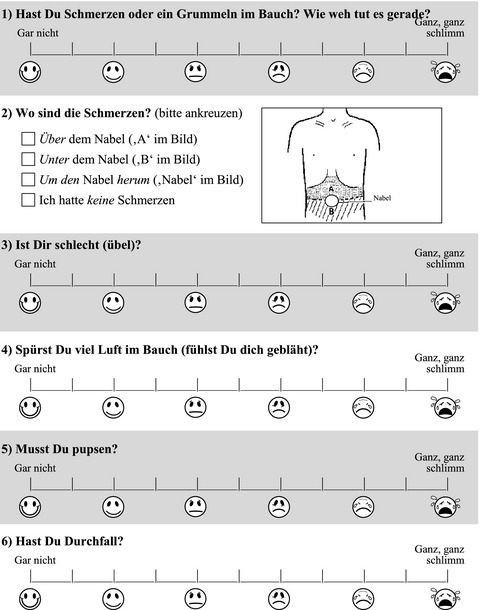
The unbiased diagnosis of carbohydrate intolerance requires a valid recording of carbohydrate induced symptoms. The paediatric Carbohydrate Perception Questionnaire overcomes the current lack of standardized and validated symptom assessment during carbohydrate breath tests, minimizes bias and can be the basis to standardize the assessment of carbohydrate intolerance.
The timed barium swallow and its relationship to symptoms in achalasia: Analysis of surface area and emptying rate
- First Published: 23 June 2020
Homozygous mutation in murine retrovirus integration site 1 gene associated with a non-syndromic form of isolated familial achalasia
- First Published: 22 June 2020
Colonic motility in patients with type 1 diabetes and gastrointestinal symptoms
- First Published: 20 July 2020
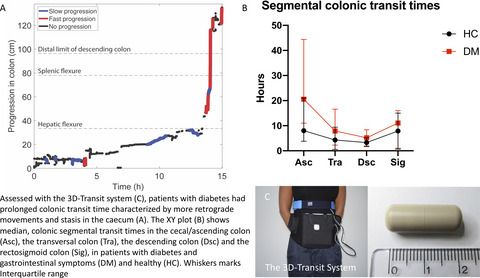
Assessed with the 3D-Transit system (C), patients with diabetes had prolonged colonic transit time characterized by more retrograde movements and stasis in the cecum (A). The XY plot (B) shows the median segmental colonic transit times in the cecal and ascending colon (Asc), the transversal colon (Tra), the descending colon (Dsc) and the rectosigmoid colon (Sig) in patients with diabetes and gastrointestinal symptoms (DM) and healthy controls (HC). Whiskers marks interquartile range.
An international survey on clinicians' perspectives on the diagnosis and management of chronic intestinal pseudo-obstruction and enteric dysmotility
- First Published: 22 July 2020
Bile reflux in patients with nerd is associated with more severe heartburn and lower values of mean nocturnal baseline impedance and chemical clearance
- First Published: 22 June 2020
Functional gastrointestinal disorders are increased in joint hypermobility-related disorders with concomitant postural orthostatic tachycardia syndrome
- First Published: 16 August 2020
Straight leg raise metrics on high-resolution manometry associate with esophageal reflux burden
- First Published: 06 July 2020
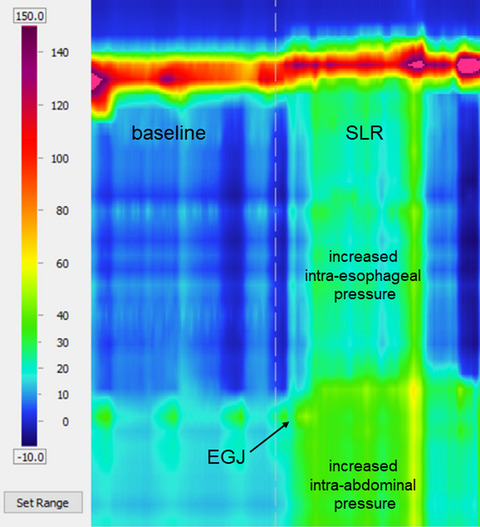
The straight leg raise (SLR) maneuver during high resolution manometry (HRM) increases intra-abdominal pressure that may transmit into the intra-esophageal cavity when the esophagogastric junction is disrupted. Analysis of intra-esophageal pressure gradients during the maneuver may provide adjunctive evidence supporting GERD.
High-resolution manometry features of paraesophageal hernia
- First Published: 20 July 2020
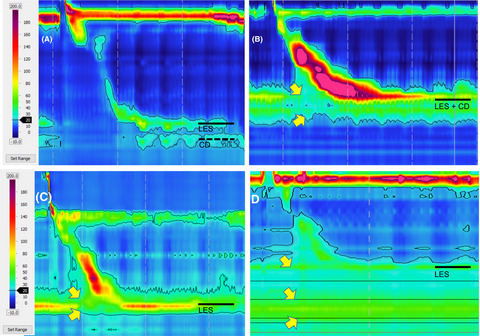
High resolution manometry (HRM) features of paraesophageal hernia (PEH) were compared to axial hiatus hernias and normal controls, with findings of increased intraluminal intrabolus pressure in the distal esophagus and intragastric pressure with PEH, in addition to short esophageal length. These findings help raise suspicion for the presence of PEH on HRM studies
Nutrient-sensing components of the mouse stomach and the gastric ghrelin cell
- First Published: 14 July 2020
Synthetic G protein-coupled bile acid receptor agonists and bile acids act via basolateral receptors in ileal and colonic mucosa
- First Published: 12 July 2020
Histone H3K9 methylation regulates chronic stress and IL-6–induced colon epithelial permeability and visceral pain
- First Published: 02 August 2020
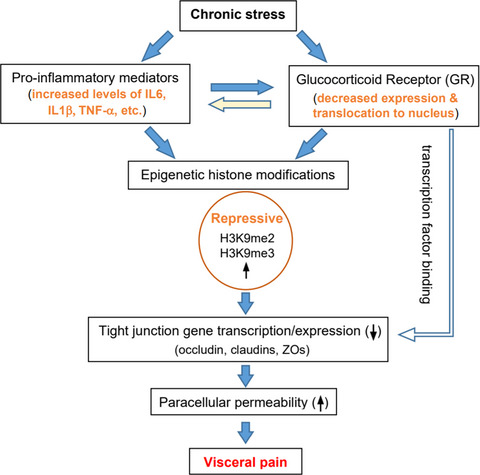
Chronic stress increases levels of pro-inflammatory cytokines, decreases GR transcriptional binding at epithelia cell tight junction gene promoters reducing tight junction gene expression, culminating in increased paracellular permeability and enhanced visceral pain sensation. Methylation of the repressive histone H3K9me2/me3 plays a central role in this process.
Early-life malnutrition causes gastrointestinal dysmotility that is sexually dimorphic
- First Published: 06 July 2020
Identification of intrinsic primary afferent neurons in mouse jejunum
- First Published: 28 September 2020
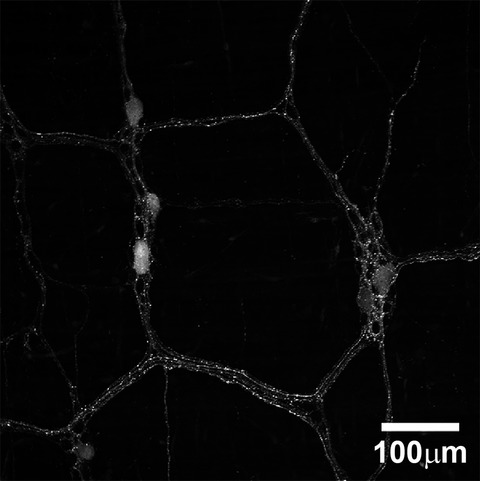
This is the first study to show that the gene advillin is expressed in a specific population of enteric neurons known as intrinsic primary afferent neurons (IPANs), which uniquely endow the digestive system with intrinsic neural reflex activity. The identity of advillin as a marker for IPANs is supported by morphological, neurochemical, and physiological evidence.




